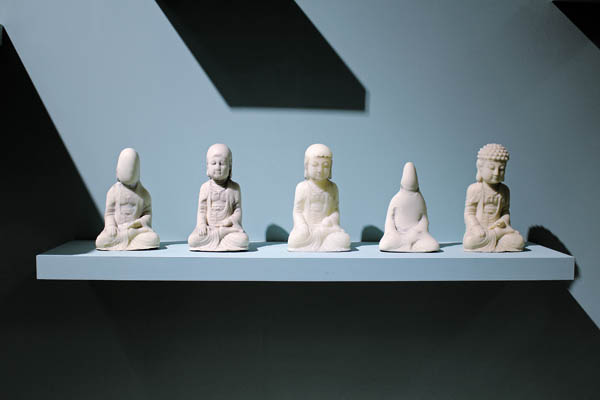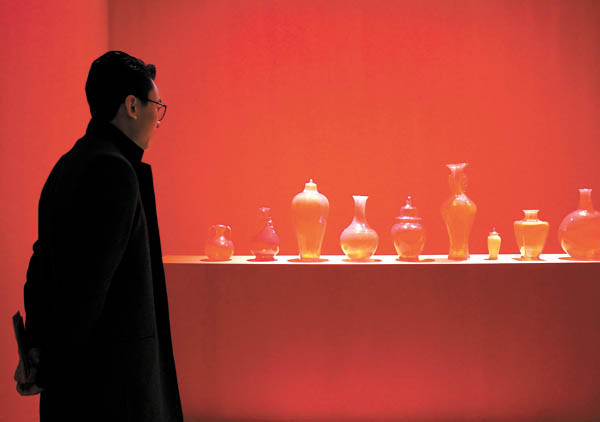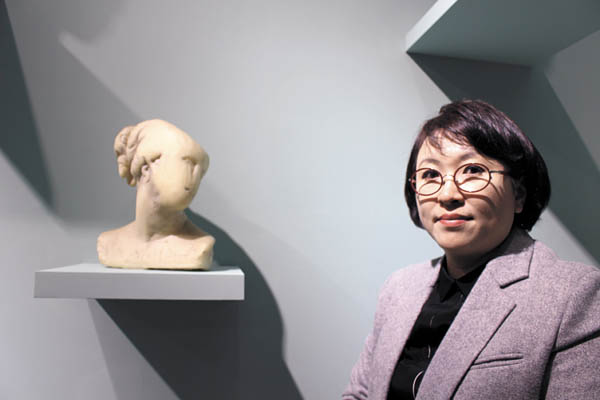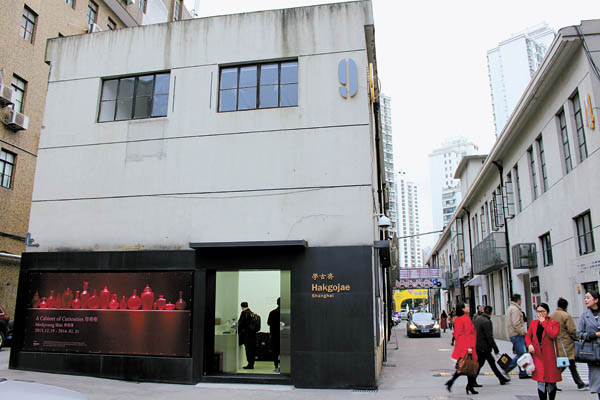Sculptures worn not by time but by hands

These small Buddhas appear to be ancient East Asian ivory works weathered by time. In fact, they are soap sculptures created by Korean artist Meekyoung Shin. They were sent to museum washrooms to be transformed by visitors. [MOON SO-YOUNG]

A visitor to Hakgojae Shanghai in the art district of 50 Moganshan Road looks at Shin’s “Translation - Ghost” series, which are elaborate reproductions of the existing Chinese ceramics in translucent soap. They are part of the Korean artist’s solo show titled “A Cabinet of Curiosities.” [MOON SO-YOUNG]

Artist Shin poses with one of her “Toilet Project” sculpture series at Hakgojae Shanghai. [MOON SO-YOUNG]
“It is a kind of translation … things are lost or added in translation,” she continued. “So I began to ‘translate’ old masters’ arts and crafts in the East and the West into my soap works. I use soap because I question the permanence of sculptures and art.”

The exterior of the gallery. [MOON SO-YOUNG]
Shin’s soap works include re-creations of ancient sculptures and Chinese ceramics. Some of them have the splendid colors and patterns of the original glazes, whereas others only have the shapes of the original ceramics, with simple translucent colors. The former group is the artist’s “Translation” series and the latter is “Translation ? Ghost” series. Parts of the two series are on view at Hakgojae Shanghai.
Shin’s works explore the “translation” between East and West, which is a matter of interest to Chinese people as well as Koreans. That’s why Shin was chosen by Hakgojae, one of Korea’s leading galleries, to hold a solo exhibition in celebration of the second anniversary of the gallery’s Shanghai branch, gallery director Woo Chan-gyu explained. Hakgojae Shanghai held a retrospective exhibit of the Korean-born video art pioneer Nam June Paik(1932-2006) on its first anniversary, which was designated one of the most meaningful art exhibitions in the city last year by Chinese art magazine Yishu Caijing, according to Woo.
BY MOON SO-YOUNG [symoon@joongang.co.kr]










with the Korea JoongAng Daily
To write comments, please log in to one of the accounts.
Standards Board Policy (0/250자)